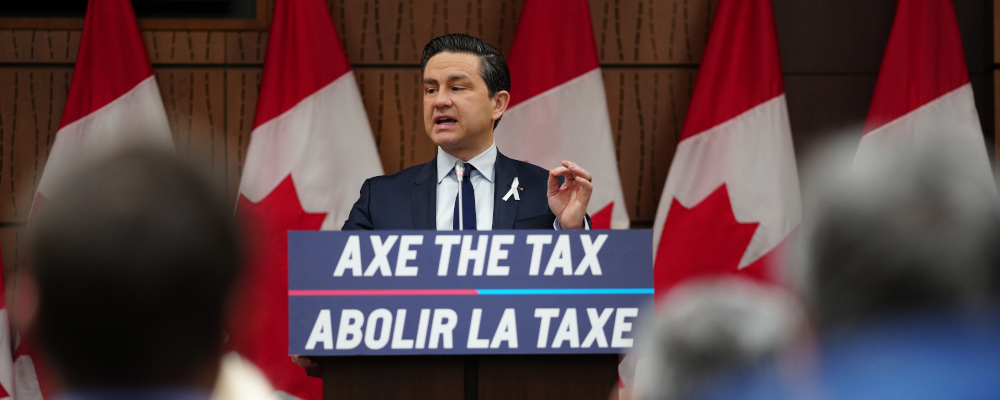There’s a rarely acknowledged reality about climate policy that goes a long way to explaining why conservative parties spend less time focusing on climate issues.
And that reality? The environment is a luxury good.
There are macro and micro implications to this. The macro implication is that rich and growing countries are better placed to address the environment and climate than their less rich or slower-growing (or shrinking!) counterparts. The micro implication is that citizens who see their purchasing power erode, and their real incomes shrink, can be excused for focusing more on inflation than on climate.
It would be political malpractice for the Conservative Party (and conservative parties more generally) to not prioritize macro-economic growth and micro-economic affordability issues—core issues on which conservatives often win.
The question for green Conservatives is, how do you fit a green agenda into those macro- and micro-economic realities?
We think there are (at least!) three answers to that question.
First, Conservatives need to prioritize growing the economy and making us all richer. Slowing growth and economic stagnation is a sure recipe for climate backsliding. The economy is simply higher on our national needs hierarchy than climate. A return to strong growth is a prerequisite to strong climate policy.
Second, our current suite of environmental policies should be put through the filter of affordability. That may mean smartly tweaking carbon taxes and/or rebates to ensure our climate policy isn’t adding to the affordability problem.
There is another aspect of climate policy that aligns with affordability and has been relatively neglected.
That issue is climate adaptation—making our homes, our communities, our cities, and our country more resilient in the face of increasing, and increasingly expensive, climate-driven events. These events—record forest fires, record flooding, the threat of earthquakes—are not only expensive in their own right, but they are driving up the cost of insurance.
As governments look to grapple with the near-universal challenge of housing affordability, working with the insurance industry to find ways to stem these rising costs is a way to do climate and affordability-friendly policy at the same time. The Insurance Bureau of Canada (IBC) has recently reported that “insured damage related to severe weather in Canada routinely exceeds $2 billion annually. At $3.4 billion, 2022 was the third-worst year on record.” This compares to an average of $400 million annually between 1983 and 2009.
Conservatives should be at the forefront of climate resiliency policy. From infrastructure investments to lessen the impact of fires and floods and quakes, to anticipating and planning to protect the health and security of citizens in the face of climate-driven events, to halting biodiversity losses, to backstopping insurance plans where the private sector can no longer profitably do so. (Major insurers are withdrawing earthquake insurance for parts of Vancouver and Victoria, B.C. This mirrors the withdrawal of insurance coverage in California due to climate-related risks.)
Conservatives should champion all these things as part of a broader affordability agenda.
Finally, and much more positively, Conservatives need to be at the forefront of the economic opportunities afforded by the climate transition that is upon us. The most obvious is the coming global demand for things Canada has in abundance: critical minerals like lithium, cobalt, manganese, nickel, and graphite.

The Liberal federal government and the Ontario’s Conservative government have plowed billions of dollars into battery plants. Now we need to make sure Canada is able to get the critical minerals out of the ground and into those plants. But the regulatory process to do so is stifling. The risk and the opportunity, as the Business Council of Alberta has written, is that there is a rosy economic future that is currently “unbuilt.” Conservatives need to transform our regulatory structures to achieve environmental, economic, and Indigenous goals.
There could not be a more ready-made set of issues for Conservatives: less government, more growth, and more jobs all leading to a cleaner environment.
Conservatives in Canada and elsewhere can stay true to their smaller government, higher growth, and affordable communities to live, play, and raise families all while retaining a commitment to a greener future. They can do that by focusing on boosting macro-economic growth so we have the resources and wealth we need for a green future, by focusing on climate resilience as part of a broader affordability agenda, and by making sure we put the mining horse in front of the battery plant cart.
That’s the way. We just need the will.




